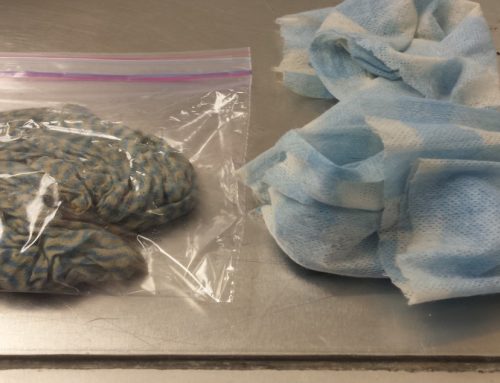Welcoming a new puppy into your family is like bringing home a newborn—sleepless nights, nonstop messes, and lots of love. Amid the exhaustion and excitement, important puppy-care facts may slip through the cracks. While we haven’t written a What to Expect When You’re Expecting (a New Puppy) guide, we have highlighted a few key tips to keep in mind when you bring home your new best friend.
How should I prepare before bringing my new puppy home?
A new puppy requires almost as much gear as a newborn, so ensure you have everything your new furry friend needs before bringing her home. Before wiping out the pet store’s puppy supplies, know what sort of pet you’re bringing home. Tiny puppy treats and toys will pose a choking hazard if you decide you want a giant breed, while a large collar will slip right off your miniature puppy. Once you’ve decided on the size or breed of puppy, start shopping for the following items:
- Food and water dishes
- Collar and leash that will fit your new puppy
- ID tags
- Breed-appropriate puppy food
- Teething toys and treats
- Crate large enough for your puppy to stand and lie down, but no larger, to help with house training
- Bedding
- Training treats
- Long-lasting chews
During your puppy’s teething phase, she will chew on everything, so ensure her toys won’t cause an intestinal blockage if she destroys them. A variety of puppy-safe chews and toys are available that can help with teething pain. As your puppy grows, you will likely need to swap out her collar, crate, and toys for larger items, so monitor her growth to ensure her collar and crate are still a comfortable fit.
How should I teach my puppy about new situations?
During your puppy’s prime socialization period, between 3 and 14 weeks of age, when she forms her world views, she should be exposed to as many new people, pets, and places as possible. But, these introductions must be done carefully to create a positive experience. When your puppy encounters a novel situation, allow her to approach at her own pace, and ensure she is comfortable and relaxed, to minimize stress. For example, go slowly when meeting new people, particularly adults with hats, beards, or wheelchairs, or children. Let your puppy approach them, rather than the strangers coming at your puppy. Allow her to sniff and check them out before they pat her chest or sides, because standing directly over a dog and petting her on the head can be threatening. As your puppy becomes comfortable with new situations, reward her with praise and treats. Remember, socialization begins as a puppy, but should be a lifelong process.
What vaccinations does my puppy need?
Your puppy’s vaccination protocol will be tailored for her individual protection, based on her lifestyle and exposure risk, but every puppy requires a few core vaccinations, including distemper, parvovirus, and adenovirus, which she will receive at each puppy visit until 4 months of age. Rabies, another core vaccination, will be given once, and will not require a booster until her yearly vaccines.
What should I feed my puppy?
No one food fits all puppies, so finding the best diet option for your furry pal can be challenging. Choose a food that is labeled for growing puppies and designed to meet their nutritional needs—many diet options are available based on a puppy’s breed and expected size. Proper nutrition is critical for large- and giant-breed puppies as they grow, to prevent orthopedic problems from developing. During your puppy’s wellness visits, we will discuss the best diet options to keep her healthy.
When should I spay or neuter my puppy?
The appropriate age to spay or neuter your puppy is also related to your pet’s size and breed. Small breeds can be spayed or neutered much younger than giant breeds, since they reach physical maturity more quickly. Giant breeds need time for their bones and joints to properly develop, aided by hormone function, before being spayed and neutered. Once we see your puppy, and can better estimate their expected adult weight, we can determine the best time-frame for them to be neutered or spayed.
What other ways can help keep my puppy healthy?

Preventive care is the best way to ensure your furry pal remains happy and healthy for many years to come. Some of the most common conditions in pets, including dental disease, heartworm disease, flea infestations, and tick-borne illnesses, can easily be prevented. Since the majority of pets have periodontal problems by age 3, implement an at-home preventive-care plan for your puppy early, and tackle tartar and plaque before they lead to painful dental disease. To help prevent diseases caused by fleas, ticks, and mosquitoes, stock up on parasite prevention products for your pup, but monitor her weight to ensure she has the correct dose as she grows.
Let us help welcome your new best friend home. Call us to schedule your puppy’s first visit with our team.





Leave A Comment